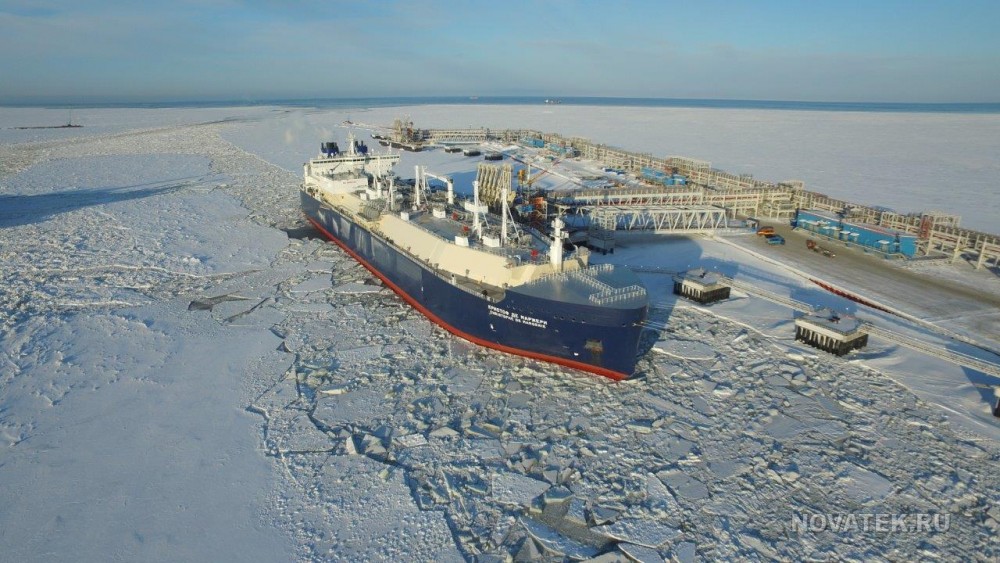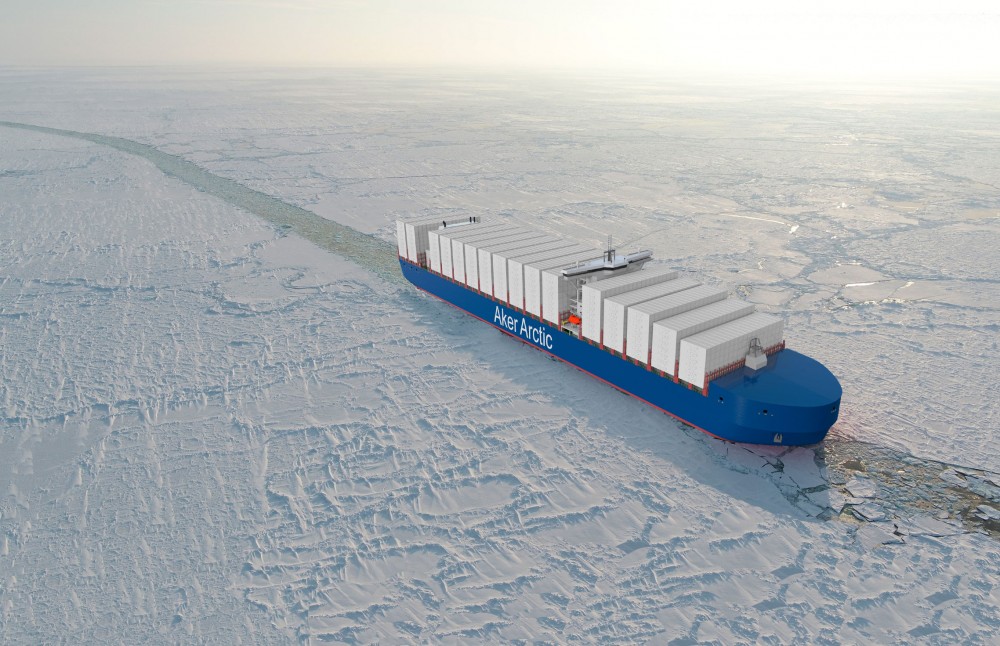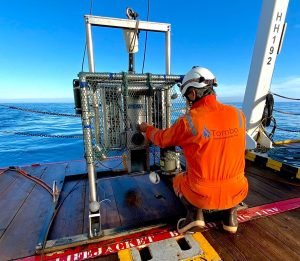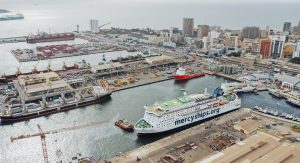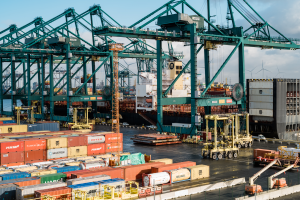As hundreds of vessels anchored on both sides of the Suez Canal waited for the giant container ship Ever Given to be freed, ship designers with Aker Arctic in Finland could not have found a better timing opportunity to introduce its latest study: an icebreaking Arctic container ship.
The Northern Sea Route north of Russia is about 40% shorter when sailing from China to central European ports than the Suez Canal route. Furthermore, the voyage around Africa takes up to two weeks longer for containerships than the Suez route, adding millions in extra costs.
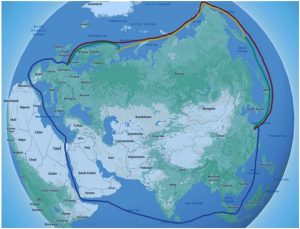 Using the experience gained from the breakthrough Arc7 LNG carriers, which have now successfully transported liquefied natural gas from Sabetta for more than three years, and the new Arctic LNG carrier design for independent year-round operation in the Arctic, Aker Arctic designed an 8000 TEU container ship for independent use in both summer and winter along the Northern Sea Route (NSR).
Using the experience gained from the breakthrough Arc7 LNG carriers, which have now successfully transported liquefied natural gas from Sabetta for more than three years, and the new Arctic LNG carrier design for independent year-round operation in the Arctic, Aker Arctic designed an 8000 TEU container ship for independent use in both summer and winter along the Northern Sea Route (NSR).
“No such type of container ship has been available before,” says Luigi Portunato, Naval Architect at Aker Arctic.
Besides an ice-strengthened hull, an icebreaking bow and winterization features, there are other specialties incorporated in the design which sets the vessel apart.
“The vessel comes with two optional designs: either using our Double Acting Ship (DASTM) technology with a hybrid propulsion solution of one shaftline with propeller in the centre and two azimuthing propulsion units on the sides, or a design with two conventional shaftlines and rudders,” Portunato explains.
The double-acting ship can manage independently on the NSR year-round by turning stern first in heavy ice, whereas the shaftline version will need the assistance of an icebreaker during extreme winter conditions, as it has lower ice breaking capabilities.
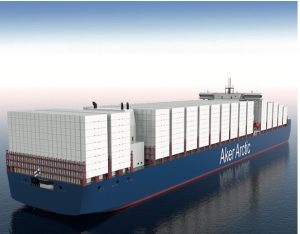 In other double acting ships, the deckhouse is usually located in the stern and it is possible to navigate backwards from the bridge. In a container vessel, this is not practical as the area is needed for containers, and the deckhouse is usually positioned in a midship location. “Therefore, in this case, we have positioned a special aft wheelhouse at the aft mooring deck for navigating stern first,” says Portunato. The machinery is separated from the accommodation and wheelhouse. Because of the freezing temperatures in the Arctic winter, a covered passageway has been arranged under the deck instead of the usual transfer path along the deck.
In other double acting ships, the deckhouse is usually located in the stern and it is possible to navigate backwards from the bridge. In a container vessel, this is not practical as the area is needed for containers, and the deckhouse is usually positioned in a midship location. “Therefore, in this case, we have positioned a special aft wheelhouse at the aft mooring deck for navigating stern first,” says Portunato. The machinery is separated from the accommodation and wheelhouse. Because of the freezing temperatures in the Arctic winter, a covered passageway has been arranged under the deck instead of the usual transfer path along the deck.
In the economic study, prior to beginning the vessel design, three possible options were explored and compared in terms of profitability: A normal open water vessel using the Suez Canal; the only route currently available for container shipping. • A new Arctic container vessel for shipments between Asian and European ports. • A new Arctic containership used only on the icy parts of the NSR, with two new reloading hubs at either end for further transportation of containers, one in Murmansk and another in Kamchatka.
The results showed the obvious: the unit cost per TEU decreases when the size of the vessel increases for all options. Although the drop was more significant for the Arctic alternatives, it is, however, difficult to establish the exact point when either of the 2 Northern Sea Route options becomes more profitable than the Suez Canal route, as there are many factors influencing the costs, such as fuel price, type of fuel and filling ratio of the container ship.
“In the current market situation, transportation with the independent Arctic container ship is slightly more costly than with the Suez Canal open water vessel,” Portunato says. “Yet, using LNG as fuel would be more profitable, and is additionally available in the area. The new Arctic containership design with hybrid propulsion can also manage on its own without icebreaker assistance, which further lowers the cost. The smaller size, 8000 TEU, is additionally more flexible in terms of cargo compared to open water container ships.”
The currently used Suez Canal option has the economic advantage of allowing big vessels carrying up to 20,000 TEU of cargo, which would be too large for the NSR. There are also many ports along the way, allowing cargo to be added when the ship is not full.
“The third option we investigated is also economically feasible, but comes with the drawback of reloading which is time-consuming. Additionally, the entire route is in Russian waters along with the envisaged transshipment hubs, hence it would most likely have to be a Russian internal ship unless cabotage is allowed.”
“Therefore, the much shorter northern distance becomes interesting if a decent speed can be achieved in winter and schedules can be relied on, which is now possible with our new design,” Portunato highlights. “Summer traffic speed and timetable reliability is not a problem.”
The environmental impact of growing traffic on the NSR has raised concerns, as the Arctic area is fragile. However, looking at the overall picture; the much shorter voyage requires less fuel and creates fewer emissions, especially as cleaner fuel options can be utilized.
Technical details: • Container capacity 8000 TEU • Length overall 300 m • Breadth 46 m • Draft 13 m
Source: Aker Arctic
